My Global travelogue in the footsteps of the SDG's
For many years I used to wear a different hat at Netafim. As the company’s Commercial Director for over a decade, I circled the world more than once. I climbed the Andes, learned many Spanish dialects, drank countless cups of dark coffee on every corner of the planet, and although I was there, representing the commercial side of the business, selling Netafim’s products and solutions, I could clearly see, wherever I went, that these precision irrigation solutions were transforming people's lives. This is why, when I was appointed Director of Sustainability a year ago, I saw it as a huge opportunity to leverage what we’ve accomplished so far in sustainable agriculture to achieve a global impact. So here’s the new and improved Natan, wearing a Panama hat made from sustainably-harvested toquilla straw.
A passport, shaving cream and a pack of SDGs
Every big change starts with a small step
Part of my work this past year has been concerned with the SDGs - 17 Sustainable Development Goals which were spelled out by the UN as a universal call to action to end poverty, protect the planet and improve the lives and prospects of everyone, everywhere. These goals were adopted by all UN Member States in 2015, as part of the 2030 Agenda for Sustainable Development which also set out a 15-year plan in which to achieve them.
Many people treat these SDGs with lip service, something that’s politically correct to talk about. The other issue with these goals is that they are huge. People see them as inconceivable, impossible to achieve. How do you end poverty? Guarantee zero hunger? Achieve gender equality?
At Netafim we've been practicing sustainability from the very beginning. Our mission, Grow More with Less is all about that - meeting current society’s needs without compromising the ability of future generations to meet theirs. For us it's always about doing. Putting ideas and concepts into actions, slowly, methodically, step by step, or as we say in Netafim, drop by drop. And once you start doing, you start seeing change, everywhere; farm by farm, one community after another - and the big concepts become real through the stories of the people whose lives we have touched.
I’d like to share with you some of these meaningful experiences that have been forged into my memory and illustrate the impact we’ve made across the globe.
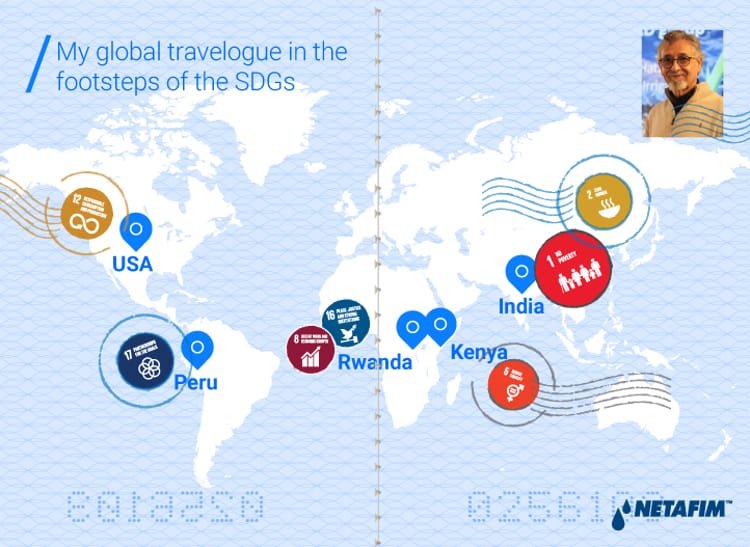
Community, Curry and Tripled Income
An integrated irrigation model offers a sustainable solution to end poverty and hunger
In a small village in the Ramthal region, in the southern state of Karnataka, I met a young woman and sat down with her family for a delicious chai masala and (way too) spicy curry. Their village is one of 28 villages that participated in the Ramthal Community Irrigation Project. The concept of community irrigation is simple; by collaborating with the local government and other public and private sectors, this model organizes smallholders into “irrigation communities”. These irrigation communities benefit from the consistent water supply through improved infrastructure, efficient precision irrigation equipment, modern farming techniques, and access to agronomic support. It helps end poverty and achieve zero hunger as it enables smallholder farmers to thrive despite their lack of access to funding for modern irrigation systems. What started as one project with 28 villages and 7000 farmers 4 years ago will cover more than 200 villages and close to 100,000 farmers by the end of 2021.
Now, think about the ripple effect these projects have. An average Indian family has six members, so right there, helping one farmer means you help 6 people. Then, each farmer is surrounded by an immediate network; suppliers, vendors, distributors, packaging, and delivery services - 10 people on average. If we do the simple math, our community irrigation projects benefited 100,000 farmers, which means 600,000 people on the first circle and a few millions on the 2nd circle also became self-sustainable. Millions of people who are out of poverty, no longer hungry, benefit from decent work and economic growth. Right here, we contribute to three SDGs, and it's just the beginning!
Then again - these are big numbers. When I asked the young woman about the impact this has had on her life she simply nodded and said: “In the first year of using drip irrigation, my family’s income almost tripled.”
Tripled!
No matter what currency you’re using, a yearly income being tripled by using precision irrigation will make a big difference to anyone’s life. When further asking her family what they plan to do with the extra money, they were very clear. First priority is education for the kids, second is buying more tools to improve their farming operation. This is truly sustainable thinking, and to me, it doesn't get more inspiring than that.
But driving change through SDG implementation is not limited just to large, government-supported projects.
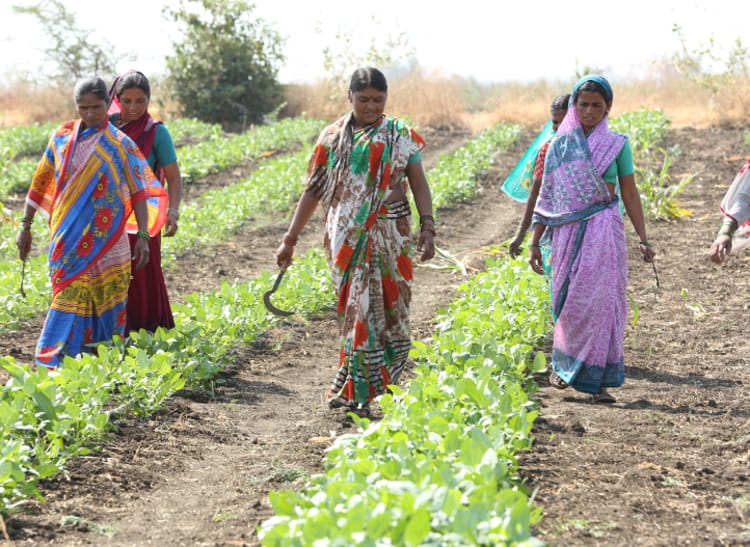
Poncho, Puno and nutritious food
Driving change is not a solo act
SDG Number 17 calls for: Partnerships for the Goals. Steve Jobs once said, “Great things in business are never done by one person.” Same here. Working together for the greater good is critical if we want to meet the SDGs by 2030. This is the course of action we took in the Peruvian province of Puno, where people still live the indigenous life of their ancestors. Most of Puno’s population lack access to water, electricity, education and healthcare. Their day to day existence is simply about survival, making sure they can put food on the table for that same day. With almost no resources and no access to running water, they are limited to growing one or two types of crops. As a result, 16% of the children in the Puno area suffer from malnutrition.
Last year we partnered with Kusimayo, an NGO dedicated to improving the quality of lives and boosting economic development in rural communities. The organization provided 1000 farmers with 180 greenhouses. We stepped in with our drip irrigation systems and guided the local farmers on the intricacies of installing and maintaining the system. The result? These farmers now have a year-round water supply. They can now grow different types of crops: carrots, broccoli, melons, watermelons, lettuce, and strawberry, and provide more nutritious food to their children and themselves. With this year-round diversified operation, they can grow more, sell their produce, and stop living day by day. No more hunger, no more poverty. No more children at risk.
This is not a game-changer, it's a life-changer.
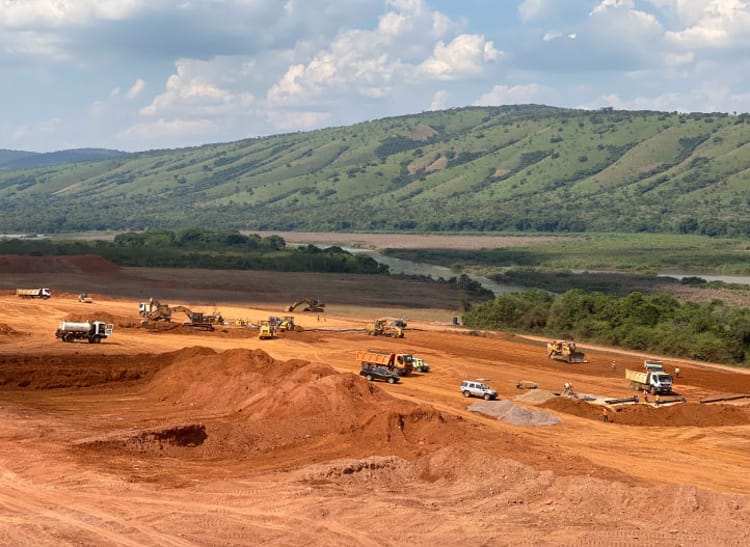
Brochettes, water buckets and family time
A commercial agricultural ecosystem delivers peace of mind
This past year, we added SDG 16 as the 10th goal to which we contribute. This specific SDG which speaks about peace, justice, and strong institutions, to me signifies the outcome of many of the things we do.
Let’s focus on Rwanda where we partnered with the local government to launch the Gabiro Agribusiness Hub Project (GAHP), a commercial agricultural ecosystem spread over 15,600 hectares of arable land. To drive economic growth, private investors leased 70% of the land this boosted agriculture, jobs, and exports. The other 30% was maintained by the local community for farming. With our drip irrigation infrastructure, land utilization will increase, while water usage will decrease by 40%.
The GAHP project delivers a range of holistic benefits; a new major source of income from agriculture, educational opportunities, job diversification, reduced unemployment, better housing, access to credit. The list goes on and on and contributes to several of the SDGs - zero hunger, elimination of poverty, decent work, and economic growth.
It is also aligned with the goals of SDG 16. How come? It's pretty simple. When people have the basics covered; when they are guaranteed food, shelter, job security, education - they tend to feel more secure and experience peace of mind in their daily life. Content people make good citizens who are a lot less likely to feel anxious or act violently, they are more likely to steer away from conflicts or uprisings.
Rwanda is only one place on the African continent where we’re able to impact people's lives with precision irrigation solutions. Women, throughout Africa, account for nearly 50% of the agricultural workforce. Their job, day in and day out is to carry brimming buckets of water from the rivers or wells to the fields. They spend hours walking this long route, back and forth, and yet they’re still responsible for all things domestic: cleaning, cooking, and raising the children. Once these women have access to water, through smart irrigation solutions, it simply transforms their lives. (and yes, there’s SDG 5 which is all about that; Gender Equality). A young mother of five in a drought-driven village once told me: “Ever since we got drip irrigation in our village I have more time to spend with my children.” Years later, this simple truth still brings me to tears.
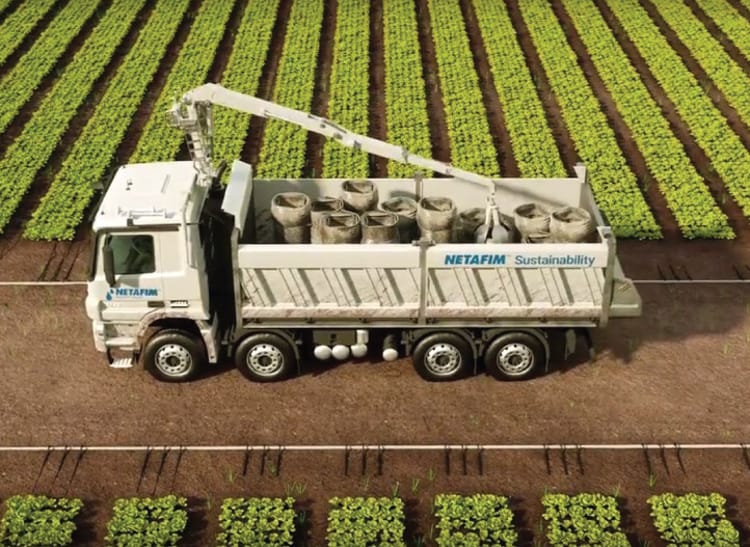
Lettuce, a circular solution and zero waste
When sustainable farming goes beyond the field
Sometimes, practicing sustainable agriculture requires challenging the status quo and adopting a whole new way of doing things. In California, we took on a huge challenge aligned with SDG 12, which speaks about Responsible Consumption and Production. Most farmers were taught to believe that single-use drip lines should be used and thrown away. Not anymore. We decided to shift the conversation to a new paradigm: Single-use and recycle. We even coined a new term, “Zero waste in farmland”. The California Department of Resources Recycling and Recovery helped us turn this vision into reality by funding the first-ever closed-loop recycling operation where we collect, shred, wash, and recycle 6000 tons of single-use drip irrigation tubing per year and turn it into new drip lines. Voila!
Turning this circular economic solution into reality required the combined efforts and creative thinking of a super-smart group of engineers who I was lucky enough to surround myself with. All I had to do was to orchestrate the vision, execute it globally, and push us, Netafim, to make a bold statement and commit to Zero Waste in Farm Land by 2030. Far fetched vision? Maybe. But it's a vision worth working towards.
And we do, step by step. The success of our closed-loop recycling operation in the U.S and our commitment to minimize the environmental impact of plastic waste on the environment has already spurred on similar projects in Australia and Israel.
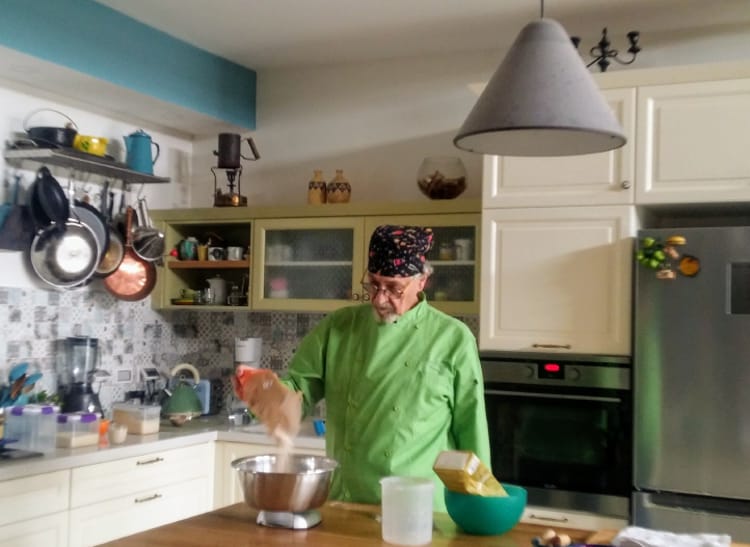
Spaghetti al Ragu, chocolate cake, and beaming young faces
Where SDG meets my family
Back from travelling the world, what I like to do most is to cook meals for my family. When we gather around the table on Friday night and I look at my children and grandchildren, it sometimes hits me that I probably won't be around to see my great grandchildren seated around this table. But while I won’t be around to see them grow up, I am still here now, proud to lead Netafim’s sustainability strategy that contributes to delivering 10 of the 17 SDGs, and working tirelessly to protect and preserve the resources we have now so that my great grandchildren can enjoy them in the future.
That’s my personal SDG.

